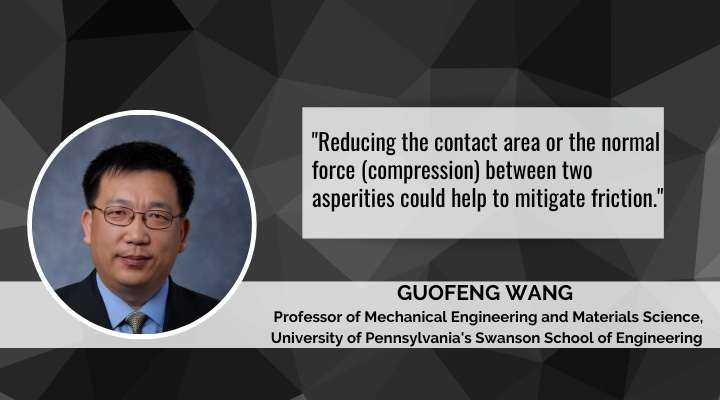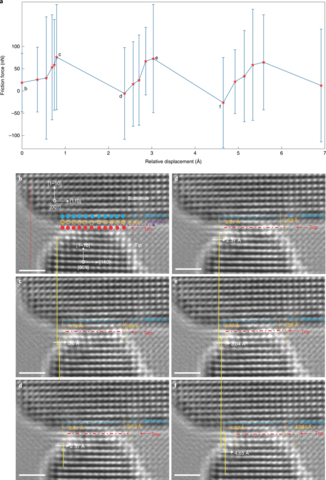Friction Observed in Real-Time at the Atomic Scale Via Electron Microscopy
Could observations of atomic-scale friction inspire future solutions to mitigate friction in machinery?
September 21, 2022

Friction is the enemy of all things mechanical, and without regular maintenance, machinery service life becomes severely reduced until, ultimately, the machines cease to function. Anyone who owns a vehicle, appliance, or bicycle can attest to that fact. Still, that detriment could become mitigated as scientists from the University of Pennsylvania's Swanson School of Engineering have gained valuable insight on friction at the atomic scale. Specifically, they managed to view the atomic-scale friction of a single tungsten asperity in real time, unveiling atomic motion for the first time with electron microscopy.
"Until now, no one has been able to actually see the atomically resolved friction process with a clear-cut interface, so the relationship between the friction mechanisms and the interface hasn't been fully understood," stated Guofeng Wang, professor of mechanical engineering and materials science. "In this study, we were able to actually see the sliding pathway of interface atoms and the dynamic strain and stress evolution on the interface that has only previously been shown by simulations."
The scientists produced the first visualization of friction at the atomic scale using a high-resolution transmission electron microscope to view the movement of tungsten atoms across the surface when two surfaces made contact and moved. They then used computer simulations to verify what the microscopic visualizations showed to better understand the forces at play. While the scientists focused on tungsten for the material in their research, given its ability to withstand the high heat associated with electron microscopy, it can be applied to virtually any material.
Professor Wang, co-author of the recently released paper entitled "Atomic-Scale Friction Between Single-Asperity Contacts Unveiled Through In Situ Transmission Electron Microscopy," set aside some time to answer a few Design News questions about the breakthrough, which provided additional insight into the scientist's revelation.
Now that atoms can be visualized while moving against other atoms of opposing surfaces, is there a way to mitigate the friction caused during that movement, or rather a stepping stone that could be identified to get us closer to that mitigation?
Wang: We find that, even in atomic-scale smooth and flat contact, there still exists high friction between tungsten crystals, and the contact area may play a more important role in deciding the magnitude of the friction force compared to the normal force. Reducing the contact area or the normal force (compression) between two asperities could help to mitigate friction. However, the high friction mainly [originates] from the strong interaction between two materials. Utilizing appropriate lubricant to weaken the interaction may be helpful for that mitigation.
How did the idea come about to use electron microscopy to see that atomic motion?
Wang: Atomic-force-microscopy (AFM)-based technologies have been widely applied for atomic friction. However, these methods cannot provide detailed and real-time information about the physical sliding scenario during friction directly. The challenge for previous atomic friction research is how to achieve contact with a well-defined interface between two asperities at the atomic scale. Previous in-situ transmission electron microscopy observation on the deformation of nanocrystals gave us the rich experience to manipulate the motion or deformation of nanocrystals under atomic-scale observation. These inspired us to use electron microscopy for atomic friction.
Would this insight have any impact on atomic friction in a superconductive state?
Wang: This is a good question. For now, we are not sure how atomic friction in a superconductive state would happen by our proposed method. In our work, the energy dissipation is suspected to be through the emissions of phonon, inducing the generation of heat. The superconductive state could help to reduce the energy dissipation from the contribution of electron-related friction. However, we cannot get more information about energy dissipation from the electron-system channel in our in-situ work. This topic requires to be investigated more in the future.

About the Author(s)
You May Also Like





